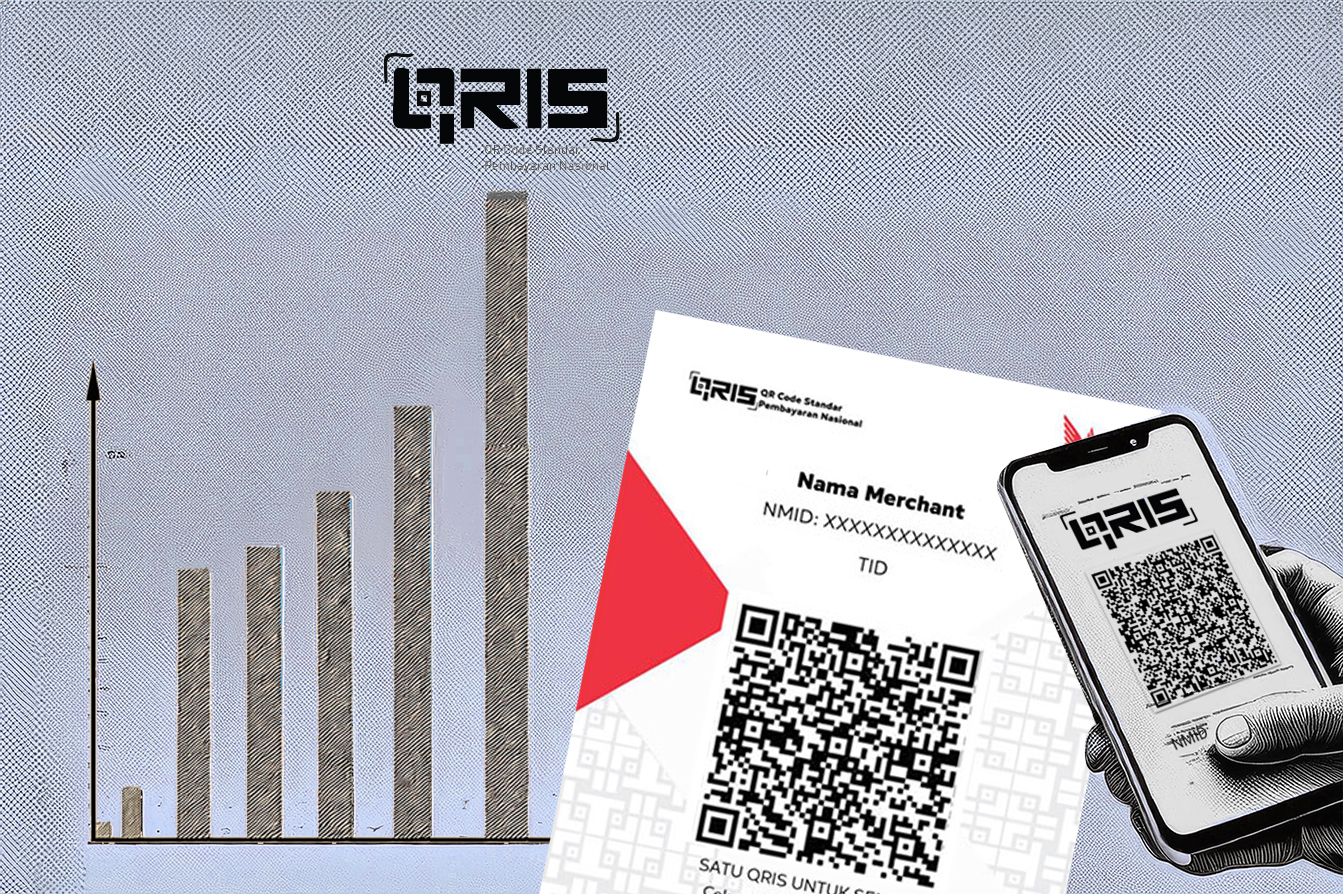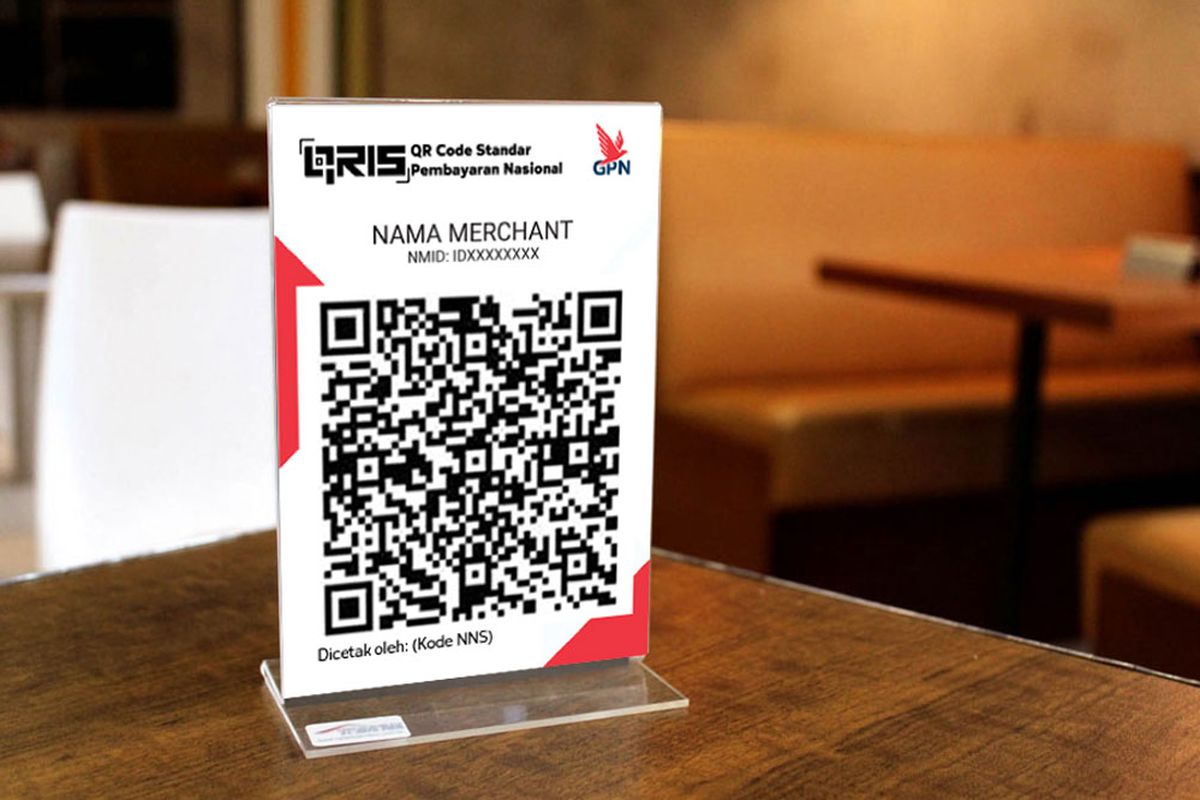QRIS Transaction Surge in 2024: Annual Growth and Impact on Digital Economy
 11 October 2024
11 October 2024

Quick Response Code Indonesian Standard or commonly known as QRIS has recorded rapid growth of up to 194.06% on an annual basis in April 2024 with the number of users reaching 48.90 million and the number of merchants 31.86 million. In addition, in August 2024 QRIS transactions grew 217.33% on an annual basis with the number of users reaching 52.55 million and the number of merchants 33.77 million. With this rapid growth, what impact will this have on the digital economy?
Rapid Annual Growth
In addition to April and August 2024, QRIS transaction growth also grew very rapidly in July 2024 which was recorded to grow by 207.55% on an annual basis. Transaction growth was also seen and recorded 226.54% in the second quarter of 2024 on an annualized basis.
In general, this surge in growth is supported by a safe, smooth and reliable payment system. Bank Indonesia also ensures that the stability of the payment system is maintained, supported by an improved structure and resilient infrastructure. Of course, there are several factors that contributed to this growth, such as:
- Ease of Transaction
QRIS offers convenience in making transactions, where users only need to scan one QR code to make payments without having to use multiple codes from various service providers. This is very attractive to consumers and merchants looking for efficiency in the payment process. - Consumer Demand
There is an increasing demand from consumers for faster and more convenient payment methods. With more and more consumers turning to digital payments, merchants feel compelled to adopt QRIS to stay competitive and meet customer needs. - Security and Reliability
QRIS provides a secure and reliable payment system, which is one of the key considerations for users. Trust in the security of digital transactions is crucial in driving the adoption of QRIS among the public. - Digital Technology Adoption
People are increasingly accustomed to digital technology, including in terms of payments. QRIS is in line with this trend, where the use of smartphones and digital payment applications continues to increase, making it easier for users to transact using QRIS. - Infrastructure Support
Bank Indonesia and other relevant institutions have invested in payment system infrastructure that supports QRIS, ensuring that the system can operate well across Indonesia, including remote areas. - Promotion and Education
Promotion and education efforts on the benefits of QRIS by Bank Indonesia and other related parties also play an important role in increasing public awareness regarding the use of QRIS as an efficient and practical payment method.
 Image Source: https://asset.kompas.com/crops/aZ18wqsEIi4v7ko0ZYw0fo245HI=/1x1:1000x667/1200x800/data/photo/2023/01/19/63c969ff592e9.jpg
Image Source: https://asset.kompas.com/crops/aZ18wqsEIi4v7ko0ZYw0fo245HI=/1x1:1000x667/1200x800/data/photo/2023/01/19/63c969ff592e9.jpg
The Impact on the Digital Economy
Its rapid growth certainly has an impact on the development of the digital economy in Indonesia. No wonder QRIS is arguably a payment platform that changes the face of digital transactions in Indonesia. Then, what are the impacts on the digital economy?
- Increased Digitalization of the Economy
QRIS contributes positively to the development of the digital economy in Indonesia. With QRIS transaction growth reaching 194.06% on an annualized basis in April 2024, this system has facilitated an increase in the value of digital transactions and expanded market reach for businesses, especially **UMKM (**Micro, Small and Medium Enterprises). - Supporting the Tourism Sector
QRIS also serves as a tool to boost the tourism sector. This payment system makes it easier for foreign tourists who come to Indonesia to make transactions without the need to carry cash. This can increase tourist visits and support local economic growth through their spending in the tourism sector. - Contribution to GDP
QRIS plays a role in increasing the digital sector's contribution to Indonesia's Gross Domestic Product (GDP). With projections that the contribution of the digital economy will continue to grow, QRIS is one of the key drivers in achieving national economic growth targets.
Related article : Baca juga : Hindari Penipuan QRIS Palsu dengan 5 Cara Efektif Ini!

